
Infographic discussing trends in online learning.
- Subject:
- Educational Technology
- Higher Education
- Material Type:
- Teaching/Learning Strategy
- Author:
- Patrick Smith
- Date Added:
- 09/27/2023

Infographic discussing trends in online learning.

This infographic provides an overview of different rubrics and standards used to evaluate the quality of online programs and course design at universities. It lists 7 major rubrics/standards:Quality Matters Rubric - Widely used rubric to improve and certify quality of online courses.Anthology Exemplary Course Program Rubric - Rubric focused on student experience and outcomes.University of Illinois ION Professional Programs Rubric - Rubric tailored for evaluating professional development programs.SUNY Online Course Quality Review Rubric - Rubric used within SUNY system to review online courses.SHSU Online Course Design Rubrics - Custom rubrics used at Sam Houston State University.Cal State Online Course Rubrics - Custom rubrics used within California State University system.Penn State Online Course Design and Review Rubrics - Custom rubrics used at Penn State.The infographic provides a useful overview of the different standards used to evaluate online course and program quality.
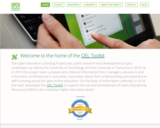
The OEL Toolkit is openly available and openly licensed. The guidance generated by the OEL Toolkit is of primary relevance to educators and developers working within Australian higher education institutions. The OEL Toolkit web application has been designed with a focus on ease of use. It provides relevant information for users seeking guidance on using, creating, modifying or sharing a specific Open Educational Resource.

Slide deck from Digital Education Summer 2022 on open image sites and their integration into online teaching.

This guide provides resources on the topic of Open Pedagogy, as a supplement to the OERTX Digital Information Literacy Hub.

This website is designed to serve as a resource for educators interested in learning more about Open Pedagogy.
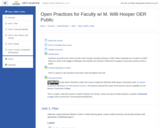
This course is intended to provide a foundation in the skills and knowledge you'll need to create, remix, adopt, or update open educational resources (OER). Specifically, by the end of the course you'll be able to:
Apply backward design in order to plan learning goals, assessment, and appropriate scaffolding/support,
Describe the meaning of open educational resources,
Locate open educational resources relevant to course learning outcomes,
Properly attribute works offered under a Creative Commons license,
Identify and create works that are accessible to all students,
Add a Creative Commons license to your own work and share back with your disciplinary community.

The attached file serves as an exemplary template for structuring an online course into modules over a 15-week semester. The outline demonstrates effective course design principles including:- Organizing content into manageable weekly modules - Incorporating diverse learning materials - Building in recurring assignments- Scaffolding assignments to develop skills over time- Aligning objectives, activities and assessments following Bloom's taxonomy for higher order critical thinking.- Providing a clear learning arc through the sequence of modules and summative comparative assignment.

Community engagement and a sense of belonging are pivotal elements in the realm of digital instruction, serving as the bedrock for enriched learning experiences and fostering a conducive learning environment. When learners feel integrated into a community, it acts as a catalyst, enhancing motivation, encouraging persistence, and providing a buffer against the isolation often associated with digital learning platforms. To facilitate the creation and nurturing of online communities and engagement, a meticulously crafted checklist is provided, offering practical tasks and steps. This checklist serves as a beacon, guiding educators and learners through the multifaceted process of building community engagement and fostering a sense of belonging.

Sample course planning matrix that can be used to help instructors focus on designing for significant learning when planning their digital courses. Based on the research of L. Dee Fink.

This resource is a template for redesigning a course to include OER. This template was designed for the OER Advanced Skills series in June 2023.

This document provides valuable tips for students to enhance their experience in online exams and proctored exams. It covers various aspects such as familiarizing oneself with the learning management system, utilizing resources effectively, conducting a technology check, and being transparent with proctors. These tips prioritize the student's experience by minimizing technical issues and ensuring a smoother learning journey.
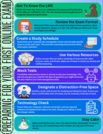
This infographic provides valuable tips for students to enhance their experience in online exams that can be deployed directly into the course. These tips prioritize the student's experience by minimizing technical issues and ensuring a smoother learning journey.

Explores the interaction of radiation with matter at the microscopic level from both the theoretical and experimental viewpoints. Emphasis on radiation effects in biological systems. Topics include energy deposition by various types of radiation, including the creation and behavior of secondary radiations; the effects of radiation on cells and on DNA; and experimental techniques used to measure these radiation effects. Cavity theory, microdosimetry and methods used to simulate radiation track structure are reviewed. Examples of current literature used to relate theory, modeling, and experimental methods. Requires a term paper and presentation. The central theme of this course is the interaction of radiation with biological material. The course is intended to provide a broad understanding of how different types of radiation deposit energy, including the creation and behavior of secondary radiations; of how radiation affects cells and why the different types of radiation have very different biological effects. Topics will include: the effects of radiation on biological systems including DNA damage; in vitro cell survival models; and in vivo mammalian systems. The course covers radiation therapy, radiation syndromes in humans and carcinogenesis. Environmental radiation sources on earth and in space, and aspects of radiation protection are also discussed. Examples from the current literature will be used to supplement lecture material.
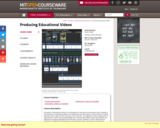
Production of Educational Videos is an introduction to technical communication that is situated in the production of educational videos; the assignments are all focused on the production of videos that teach some aspect of MIT's first-year core curriculum. The objective of these assignments is improvement in both communication ability and communication habits; these improvements are effected by providing participants with instruction, practice, feedback, and the opportunity for reflection. In addition to improvements in communication skills, improvement is expected in students' attitude towards writing, oral presentations, and collaboration; as the semester progresses, students should feel confident of their ability to write, present, and collaborate.
Instructors can turn on the Progress Tracking feature in a course. This allows you to track your course progress related to course content, assignments, and tests.
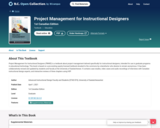
Project Management for Instructional Designers (PM4ID) is a textbook about project management tailored specifically for instructional designers, intended for use in graduate programs in educational technology. This book is based on a pre-existing openly licensed textbook donated to the commons by a benefactor who desires to remain anonymous. It has been collaboratively revised and updated by students and faculty at the University of Saskatchewan. It contains case studies, video cases and audio recordings of interviews with Canadian instructional design experts, and interactive reviews of three chapters using H5P.

This document provides a checklist tool for managers and leaders in distance education centers and online departments to utilize when prioritizing projects and determining workload allocation. It includes sections on assessing project alignment with organizational goals, evaluating resources needed, considering risks and constraints, and scoring/ranking projects. The checklist encourages objective analysis of proposed initiatives to aid in decision-making on what projects should move forward.

Los proyectos de esta guía utilizan un enfoque centrado en los alumnos para el aprendizaje. En lugar de solo aprender acerca de la IA con videos o conferencias, los alumnos que realizan estos proyectos son participantes activos en la exploración de ella. En el proceso, los estudiantes trabajarán directamente con tecnologías innovadoras de IA, participarán en actividades no en línea para ampliar su comprensión de cómo funcionan las tecnologías de IA y crearán diversos productos auténticos
desde modelos de aprendizaje automático hasta videojuegos— para demostrar su aprendizaje.
PROYECTO 1: Programación con aprendizaje automático
PROYECTO 2: Jugadores asistidos por IA en videojuegos
PROYECTO 3: Uso de la IA para planificar movimientos robóticos
PROYECTO 4: El aprendizaje automático como un servicio

Esta guía ofrece proyectos centrados en los alumnos que pueden enseñar directamente estándares de áreas de estudio en conjunto con comprensiones fundamentales de los que es la IA, cómo funciona y cómo impacta a la sociedad. Fueron considerados varios enfoques clave para diseñar estos proyectos. Entender estos enfoques sustentará su comprensión y la implementación de los proyectos de esta guía, así como su trabajo para diseñar más actividades que integren la enseñanza sobre la IA en su plan de estudios.
PROYECTO 1: Lo que la IA hace bien y lo que no hace tan bien
PROYECTO 2: Datos de entrenamiento y aprendizaje automático
PROYECTO 3: Los sentidos comparados con los sensores
PROYECTO 4: Navegación e IA